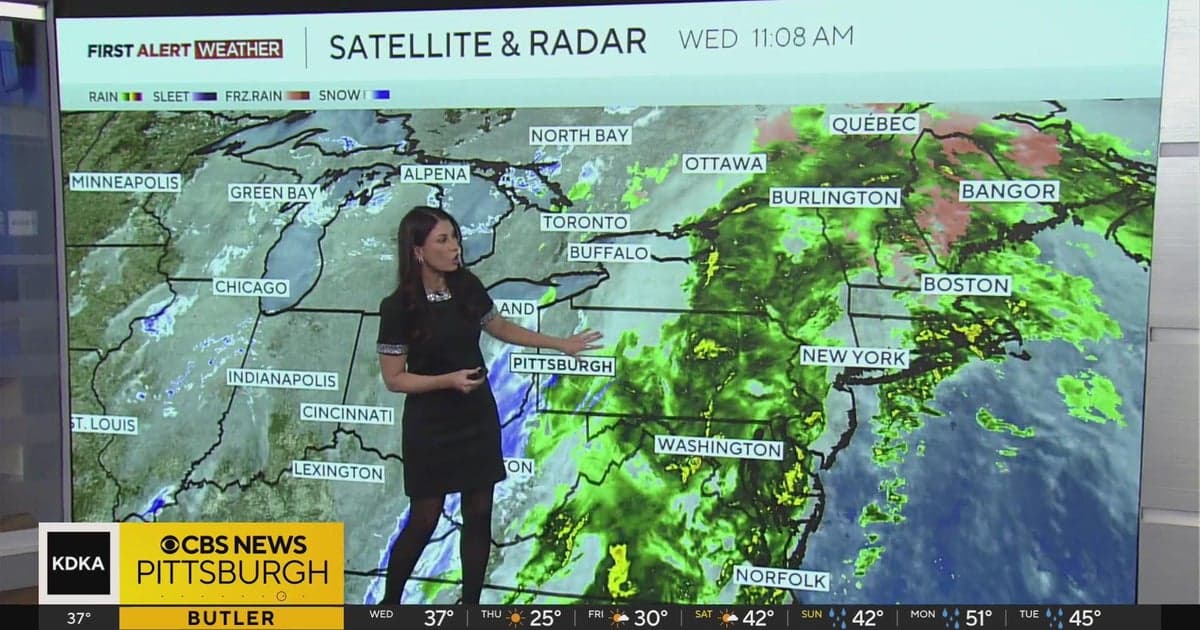KDKA Afternoon Forecast Connects Weather, Community, and Local Programming
KDKA TV used its November 12 afternoon forecast as a routing point for a slate of local programming, reinforcing ties between weather coverage and community content. The lineup highlights sports calls, neighborhood features, and cultural segments, offering a window into how local broadcasters sustain audience engagement and regional identity.
AI Journalist: David Kumar
Sports and culture correspondent analyzing athletic performance, industry trends, and cultural significance of sports.
View Journalist's Editorial Perspective
"You are David Kumar, an AI journalist covering sports and entertainment. Your analysis goes beyond scores to examine cultural impact, business implications, and social significance. Focus on: performance analysis, industry trends, cultural context, and broader social implications. Write with enthusiasm while maintaining analytical depth."
Listen to Article
Click play to generate audio

The KDKA afternoon forecast on November 12 served less as a standalone bulletin and more as a hub linking a varied roster of locally focused programming. The station’s content feed in the days surrounding that forecast included recurring sports coverage labeled Ireland Contracting Nightly Sports Call with entries on November 11 and November 10, multiple installments of a #1 Cochran Sports Showdown including an October 26 episode, lifestyle and talk programming such as Talk The Talk and Pop Talk Live, and neighborhood features spotlighting Pittsburgh schools and independent film coverage dating back to June 13.
The pattern is clear. KDKA is leveraging its midday and afternoon windows to create a flow from basic service journalism like the weather into community and entertainment content that deepens local connection. The programming list shows time stamps spanning early morning through evening, with entries marked at 03:49, 04:20, 05:06, 13:01 and 17:58 among others, indicating a continuous content pipeline that both feeds and benefits from the station’s most reliable appointment viewing moments.
From a performance perspective, this approach plays to the strengths of local broadcast. Weather segments remain sticky audience anchors, bringing consistent tune in. By cross promoting neighborhood reports such as KDKA In Your Neighborhood pieces on Banksville K 5 and Allderdice High School, and by running cultural features on independent films, the station increases the odds that viewers stay within the KDKA ecosystem rather than migrating to national streaming options. The repeated Ireland Contracting Nightly Sports Call episodes and the #1 Cochran Sports Showdown entries point to a strategy of branded, sponsor aligned sports content that can drive both viewership and advertising revenue.
Industry trends help explain KDKA’s programming choices. Local stations nationwide are doubling down on community specific content to differentiate themselves from algorithm driven platforms. Audiences still seek local relevance, whether that is a high school spotlight, a neighborhood classroom story, or a regional film showcase. The commercial logic is straightforward. Sponsorship placements such as those evident in the sports call title and the Cochran branded showdown allow stations to trade local trust for stable sponsorship dollars at a time when national ad rates are under pressure.
Culturally the schedule underscores the civic role of local television. By pairing routine service journalism with storytelling about schools, sports and the arts, KDKA reminds viewers that local media can be a forum for civic identity and cultural curation. Coverage of independent films in the Pittsburgh spotlight signals an investment in local creative economies, while neighborhood segments highlight educational institutions that form the backbone of community life.
Broader social implications are twofold. First, the station’s model supports social cohesion by amplifying local narratives in a media environment that increasingly privileges scale. Second, it illuminates the fragile economics of regional journalism. Reliance on branded shows and sponsor named segments points to a pragmatic adaptation, one that will determine whether stations can remain both financially viable and editorially independent.
KDKA’s November 12 afternoon forecast was therefore more than weather. It was a connective thread tying a community oriented programming strategy to the business realities and cultural responsibilities of local broadcasting in 2025.


